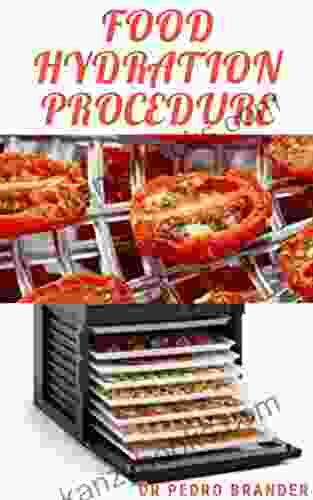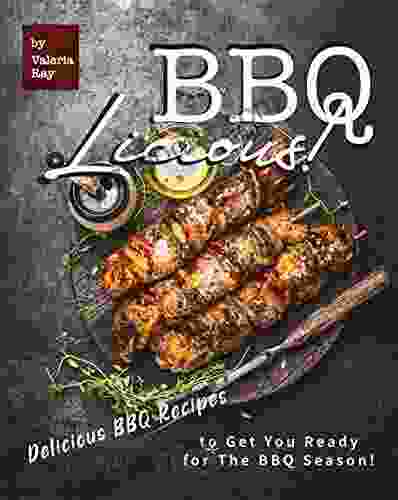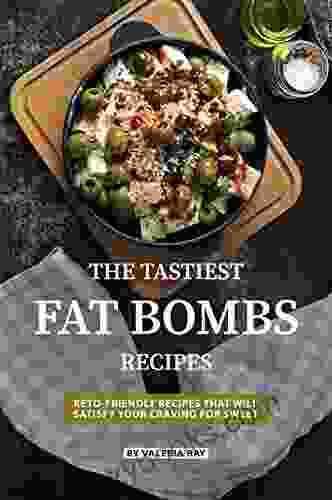The Ultimate Guide to Food Dehydration: Preserve Your Food and Enjoy Endless Culinary Possibilities

In a world where convenience often compromises nutrition, food dehydration offers a remarkable solution. By removing water from food, you can not only preserve it for extended periods but also enhance its flavor, concentrate its nutrients, and unlock a wealth of culinary possibilities.
4 out of 5
| Language | : | English |
| File size | : | 487 KB |
| Text-to-Speech | : | Enabled |
| Enhanced typesetting | : | Enabled |
| Print length | : | 37 pages |
| Lending | : | Enabled |
| Screen Reader | : | Supported |
Embark on a delectable journey as we delve into the fascinating world of food dehydration. This comprehensive guide will empower you with an in-depth understanding of the science behind dehydration, introduce you to various methods, and provide practical tips to master the art of preserving your favorite foods.
Chapter 1: The Science of Dehydration
Dehydration, the process of removing water from food, has been a staple in food preservation for centuries. Understanding the scientific principles behind this age-old technique is crucial for effective and safe food dehydration.
When water is removed from food, the concentration of other components, such as sugars, proteins, and minerals, increases. This not only enhances the food's flavor and nutritional value but also inhibits the growth of microorganisms that cause spoilage.
Dehydration also reduces the weight and volume of food, making it easier to store, transport, and consume. Whether you're an avid backpacker, a busy professional, or simply seeking to reduce food waste, dehydration offers a practical and versatile solution.
Chapter 2: Methods of Food Dehydration
The art of food dehydration encompasses a wide range of techniques, each with its unique advantages and drawbacks. From the age-old practice of sun drying to the innovative advancements of freeze drying, we'll explore the most common methods to help you choose the best approach for your needs.
a) Sun Drying
Sun drying, the most traditional method of food dehydration, harnesses the power of sunlight to evaporate moisture from food. This simple and cost-effective method is ideal for fruits, vegetables, and herbs. However, it requires favorable weather conditions and can be time-consuming, especially in humid climates.

b) Oven Drying
Oven drying involves placing food in a preheated oven to remove moisture. This method is faster than sun drying and can be used for a wider variety of foods, including meat, fish, and jerky. However, it's important to monitor the temperature carefully to prevent overcooking or burning.

c) Dehydrator Drying
Food dehydrators are specialized appliances designed specifically for food dehydration. They circulate warm air around the food, speeding up the drying process. Dehydrators offer consistent results and are suitable for a wide range of foods, including fruits, vegetables, meat, and even yogurt.
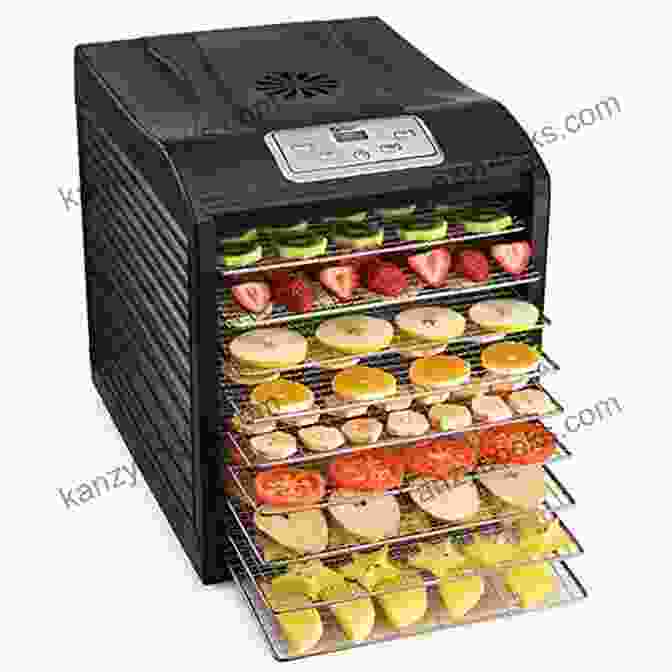
d) Freeze Drying
Freeze drying, a more advanced method of dehydration, involves freezing the food and then placing it in a vacuum chamber. Under these conditions, the ice in the food sublimates directly into water vapor, bypassing the liquid stage. Freeze drying produces foods that retain their shape, flavor, and nutritional value exceptionally well.

Chapter 3: Preparing Food for Dehydration
Preparing food for dehydration is crucial to ensure successful and safe results. Proper preparation removes excess moisture, prevents spoilage, and enhances the final product's flavor and texture.
a) Washing and Cutting
Thoroughly wash all fruits and vegetables before dehydration to remove dirt, pesticides, and bacteria. Cut the food into uniform pieces to
4 out of 5
| Language | : | English |
| File size | : | 487 KB |
| Text-to-Speech | : | Enabled |
| Enhanced typesetting | : | Enabled |
| Print length | : | 37 pages |
| Lending | : | Enabled |
| Screen Reader | : | Supported |
Do you want to contribute by writing guest posts on this blog?
Please contact us and send us a resume of previous articles that you have written.
 Book
Book Novel
Novel Page
Page Chapter
Chapter Text
Text Story
Story Genre
Genre Reader
Reader Library
Library Paperback
Paperback E-book
E-book Magazine
Magazine Newspaper
Newspaper Paragraph
Paragraph Sentence
Sentence Bookmark
Bookmark Shelf
Shelf Glossary
Glossary Bibliography
Bibliography Foreword
Foreword Preface
Preface Synopsis
Synopsis Annotation
Annotation Footnote
Footnote Manuscript
Manuscript Scroll
Scroll Codex
Codex Tome
Tome Bestseller
Bestseller Classics
Classics Library card
Library card Narrative
Narrative Biography
Biography Autobiography
Autobiography Memoir
Memoir Reference
Reference Encyclopedia
Encyclopedia Stephen Rollnick
Stephen Rollnick Tim Farrow
Tim Farrow Stephen Shaskan
Stephen Shaskan William A Harshaw
William A Harshaw St John Greene
St John Greene Mireille Guiliano
Mireille Guiliano Kristen Schneider
Kristen Schneider Tim Probert
Tim Probert Herbert Benson
Herbert Benson Shi Xinggui
Shi Xinggui Yolanda King
Yolanda King Lynn S Chancer
Lynn S Chancer Joseph Hergesheimer
Joseph Hergesheimer Annette Pasternak
Annette Pasternak Saray Stancic
Saray Stancic Traleg Kyabgon
Traleg Kyabgon Ty M Bollinger
Ty M Bollinger Tim Peeters
Tim Peeters Sofia Mancini
Sofia Mancini Tim Hwang
Tim Hwang
Light bulbAdvertise smarter! Our strategic ad space ensures maximum exposure. Reserve your spot today!
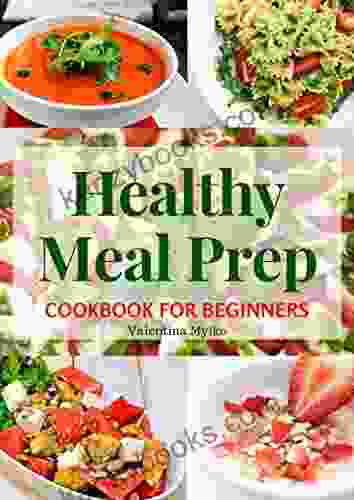
 Dave SimmonsThe Easy, Fast, and Tasty Recipes Diet: Advice for Weight Loss, Clean Eating,...
Dave SimmonsThe Easy, Fast, and Tasty Recipes Diet: Advice for Weight Loss, Clean Eating,... Tom ClancyFollow ·2.2k
Tom ClancyFollow ·2.2k Colt SimmonsFollow ·6.3k
Colt SimmonsFollow ·6.3k Herman MitchellFollow ·3k
Herman MitchellFollow ·3k Elliott CarterFollow ·6.5k
Elliott CarterFollow ·6.5k W. Somerset MaughamFollow ·12.2k
W. Somerset MaughamFollow ·12.2k Hector BlairFollow ·6.1k
Hector BlairFollow ·6.1k Peter CarterFollow ·15.2k
Peter CarterFollow ·15.2k Julio CortázarFollow ·10.1k
Julio CortázarFollow ·10.1k

 Virginia Woolf
Virginia WoolfGetting High Fat Diet Easily Using Keto Fat Bomb Cookbook
Unveiling the Power of Fat...

 Milan Kundera
Milan KunderaAre You Cryin' Brian? Find the Inspiration and Humor in...
Life can be full of...

 Edmund Hayes
Edmund HayesUnlock Your Vitality: The 15-Day Natural Energy Boost...
Are You Ready to...

 Gavin Mitchell
Gavin MitchellMultiple Sclerosis Life Expectancy: Unveiling the Impact...
Multiple Sclerosis (MS) is a...

 Gabriel Garcia Marquez
Gabriel Garcia MarquezGet The Thighs That Can Crack Man Head Like Walnut
Are you tired of weak, flabby...
4 out of 5
| Language | : | English |
| File size | : | 487 KB |
| Text-to-Speech | : | Enabled |
| Enhanced typesetting | : | Enabled |
| Print length | : | 37 pages |
| Lending | : | Enabled |
| Screen Reader | : | Supported |


